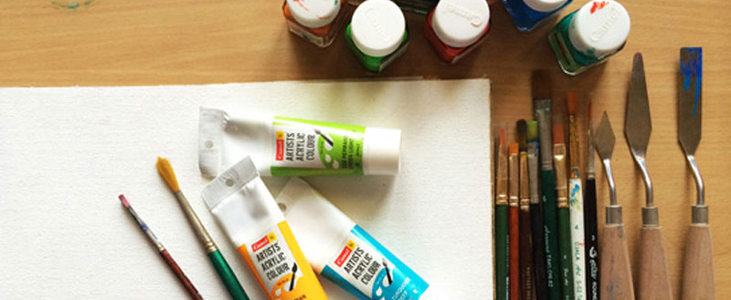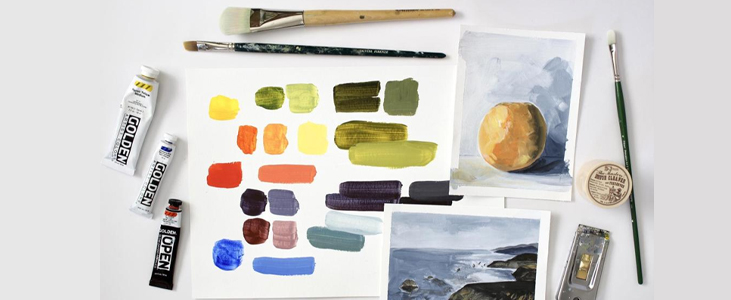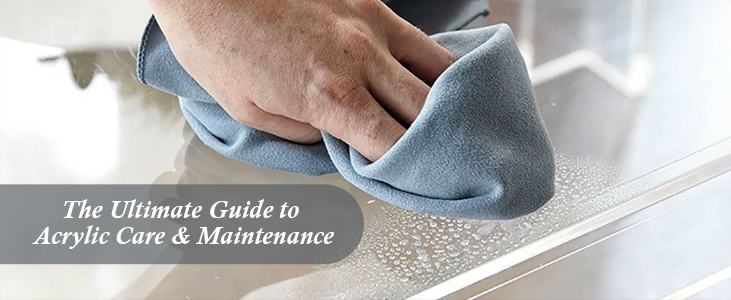
Acrylic Paints are known as the favorite medium of photorealist artists since they are perfect options for a beginner as well as expert artists. Acrylic paints are easy to clean and use, with versatility, affordability, and quick-to-dry features. Since they are popular, people are in search of the best Acrylic company in Dubai for acrylic painting materials. Apart from the painting materials, acrylic companies also offer various acrylic plastic products like Acrylic panels, acrylic furniture, acrylic display, acrylic sheets, acrylic roofing sheets, etc.
Acrylic Fabricators in Dubai are keen on making excellent pieces for Acrylic Painting & Designing with great options to develop your skills in making painting smooth and clear. In this blog post, we focus on providing step-by-step tutorial guides that let you walk through the processes to get started with acrylic painting. We have also included tips and tricks that can make your experience with acrylic painting much more effortless.
Table of Content
What Are Acrylic Paints?
Let us first discuss what acrylic paint means and how it differs from the other sources.
Acrylic paints are the pigments that are suspended in the water-soluble acrylic polymer base, which exhibits water-resistant while dry. Acrylic is fast-drying, simple to clean up, possesses low odor, highly pigmented, making the colors very vibrant and bold.
When compared to the oil paints that take an entire day or longer to fully dry, acrylic paints quickly dry in minutes. You can paint well over the dried areas and seems to be highly appealing for beginners. They are water-soluble while being wet, and are water-resistant once dry. So once dry, the changes can’t be made.
Acrylic paints are quite inexpensive and easy to work with, where creative artists can make stunning results.
Materials Required to start with Acrylics

Acrylic painting essentials include a palette, brushes, canvas, paper towels, rag, soap, and water. You can find variations in the materials available to you, but it is recommended to use the student-grade materials rather than going for a professional-grade painting set.
Student grade products can be less expensive and excellent to practice the colors when you are a beginner. When you grow more confident with your painting skill set, you can switch to products with more quality.
Acrylic Paints
You can start with the best acrylic paints available in the market and it is ideal to purchase the larger paint tubes which you think you will often use. Take care to keep a large tube of black paint since you use them a lot for your base and blending work for color mixing or background color.
Acrylic Paint Brushes
The selection of brushes is an important factor to be considered while painting. Buy a couple of brushes with various sizes, and types, to enjoy making fine details much smooth and more impactful. Natural brushes can let you make every layer of paint the best when doing photorealistic paintings.
Brush size
Have a combination of small, medium, and big brushes to practice the brush strokes with varied sizes. The various detailing brushes can make the details clear and clean. Have at least a round brush, a flat canvas brush, and a thin small brush for your work.
Brush Material
Try using synthetic brushes rather than the brushes made using animal hair. Acrylics would be hard on the brushes made with animal hair, typically when they are dipped in water. One of the significant aspects you can do after purchasing brushes is to understand and analyze how to use every type of brush and how to care for your brushes.
Here is a tip to make your brush purchase easy with the wide range of brushes that include:
- Flat Brush
- Wash Brush
- Round Brush
- Angled Brush
- Fan Brush
- Liner Brush
After you get the brushes, take them out of the case and eventually run your fingers along with the brushes. Hold the brush and you can feel the bristles using your fingers. Brush it using a freehand method, and you will be able to do better things with time.
Canvas & Easel
When you start the acrylic painting, get a pack of acrylic-approved boards. You can either prime the canvas yourself or ensure they get primed for you. The primed canvas boards will have labels and look white. Though the easel is not that necessary, you can make the painting experience stunning using easels. You can buy the used easels on eBay, MarketPlace, CraigsList, and eBay, or from the local art store.
A comprehensive guide to begin painting with Acrylics

Acrylic paints are not fixable and flexible as watercolor painting or an oil painting, they are to be handled with utmost care. Some of the acrylic craft ideas and hobbies can be highlighted with the smooth texture of acrylic paints. Acrylic painting can be easy if you follow this step-by-step painting guide explained in detail below.
-
Set up your painting station
Arrange a peaceful space at your home or outdoors, and get your supplies and easels arranged there. Keep your canvas on the easel, and a rag or a paper towel beside the palette, and arrange the brushes in a cup close to the palette. They should be kept in orientation according to your usage. Cover the flow with an old rug, garbage bag, or tarp if you are inside. You can also make an acrylic box to store the painting materials and essential items safely.
-
Experiment with your painting materials
To master an art form, you have to be familiar with the media. To deal with the acrylic painting particularly, you need to develop a feel for how the paint is applied, how quickly they dry, how well they set on your canvas, and how they blend with the other colors. There are various products available to let you extend the paint or alter the consistency, making it thicker for giving a dimensional effect, and also to change from matte to glossy finish. Most of the acrylic paints can be diluted with water or can be used just as it is right from the tube.
Here are some of the actionable ideas to frame the ways for experimentation with acrylic paints. Here are the exercises to make your painting easier and more professional.
- Swatch the acrylic colors on a canvas to realize the feel for how fast they dry, how they apply to the canvas, and their opacity levels.
- Incorporate certain modifying products to see how they impact every swatch. You can observe how the water impacts the consistency and opacity of paint.
- Make a linear gradient from black, white paint, and then with two corresponding colors like red to blue, yellow to green, etc. This can help you to understand how professional-quality paints can blend.
-
Create a Rough sketch or Conceptualize the painting
Before you put the acrylic brush on paper, you have to conceptualize the painting. For instance, this is just as creating and making vision in the head, or taking time to sketch out the painting using a light pencil. A car should look like a car- so you make an under-drawing to help in the painting composition.
On the contrary, the ‘Plein air’ painting is a kind of painting done with freehand and won directly through observation. It is a kind of painting with the landscape around, preferably outdoors. For example, the beach scene drawing with the beach in the landscape! If you would like to sketch beforehand, then do this digitally, as this can let professional artists play with various colors well before they start with the process.
-
Begin Acrylic Painting
The next step is to start your acrylic painting. If you feel a bit hesitant to deep dive, then it is better to go through some acrylic painting ideas to get more ideas and clarity on acrylic painting. Here are some core rules to be followed while working with acrylics:
- Travel from light or mid-tones to darker colors. Implement the mid-tone first, followed by the darker tones to enhance the depth. Finally include highlights at the end. The mid-tone lets you form the dark tones, and add richness, while the lighter colors let others know where the light falls. Make it work and balance the act with practice.
- Start making large shapes, and then move to the minute details. It is easy to go back over your bigger shapes to the smaller details in the painting process rather than taking an opposite strategy. As you work, you need to think about the painting that comes to focus.
- Note that the acrylics dry quickly. The blending should be done on the palette before the paint hits the fresh canvas. To keep the paint moist, you can either use a spray bottle to spritz the paints or keep them moist enough.
A true artist captures the real essence of an object regardless of working with abstract, painting, or a portrait. While you paint, get out of the mechanics and get deeper into the experience and life. This can make your work unique and let you use the paints with the most creative process.
-
Preserve the paints
Acrylic paints are water-resistant and dry easily. If you are proud of your painting and wish to ensure they last, or you need to include any further dimension, then apply an acrylic-friendly varnish on the top. This can give a shiny, glassy feel to the painting and safeguard it from paint flaking or scratches.
An absolute beginner can’t make a masterpiece with the first painting. It has so much pain and effort to teach the best of the acrylic painting journey. If you have the wish to paint small, large, indoors, or outdoors, it is time to follow your heart with the most comfortable acrylic paints.
Final Thoughts
It is important that you take good care of the acrylic paints, brushes, and follow the storage of acrylic products, used acrylic material, etc. safely, so that it is easy for you to find them for the next work, and also preserve them from getting wasted. It is advised to follow the acrylic care guide if you are keen on knowing the concepts about acrylic and the tips to care for acrylic products.
Before we wrap up the complete beginner guide, let us give you some quick tips that would be an added value to beginners who wish to gather more insights about acrylic painting.
- Paint in a ventilated and well-lit room, try acrylic lighting.
- Store your acrylic paints in airtight containers, plexiglass, or acrylic boxes when not in use
- Get a color wheel and learn a color theory tutorial
- Let every layer of color have a dry time before applying the next layer to avoid paint colors mishmash
- Sketch painting with a pencil at the beginning
- Start first with dark colors, and move to the lightest color, this will work the best with abstract painting.
- To keep your colors wet overnight, try these steps:
Either use slow-drying acrylic paints, wet palettes, plastic palettes, nonabsorbent palettes or keep the paint in styrofoam plates. You can even store the leftover paint in the refrigerator.
That’s it, and with time and effort, you gain a hold over acrylic paint to improve skill levels and make beautiful acrylic sketches!
Frequently Asked Questions (FAQ)
-
Is there a need to use water with the acrylic paint?
No, you don’t have to add water to your acrylic paint. You don’t have to add anything to the acrylic paint. The only reason why people add water to other colors like watercolor painting, craft paints, oil colors, etc., is to modify the consistency of the paint or change the characteristics of the paint.
-
Is it necessary to wet the acrylic brush before we use acrylic paint?
You can keep the brushes in the water while painting, hence the paint does not dry in the brushes. Use a container that has a shallow water layer to soak the brushes, but not the handles. If handles are wet, they can cause the lacquer to peel off. Use another container to clean your brushes while changing the colors.
-
How to get a good finish with acrylic paints?
Gesso, a paint mixture to be used for prime canvas before painting, can be applied to the canvas for the finish. Use any additive like flow improver or acrylic polishing to your acrylic paint. Select the right brush and don’t let the paint dry quickly. You can also use sandpaper as required to take the finished painting to an extra step.




